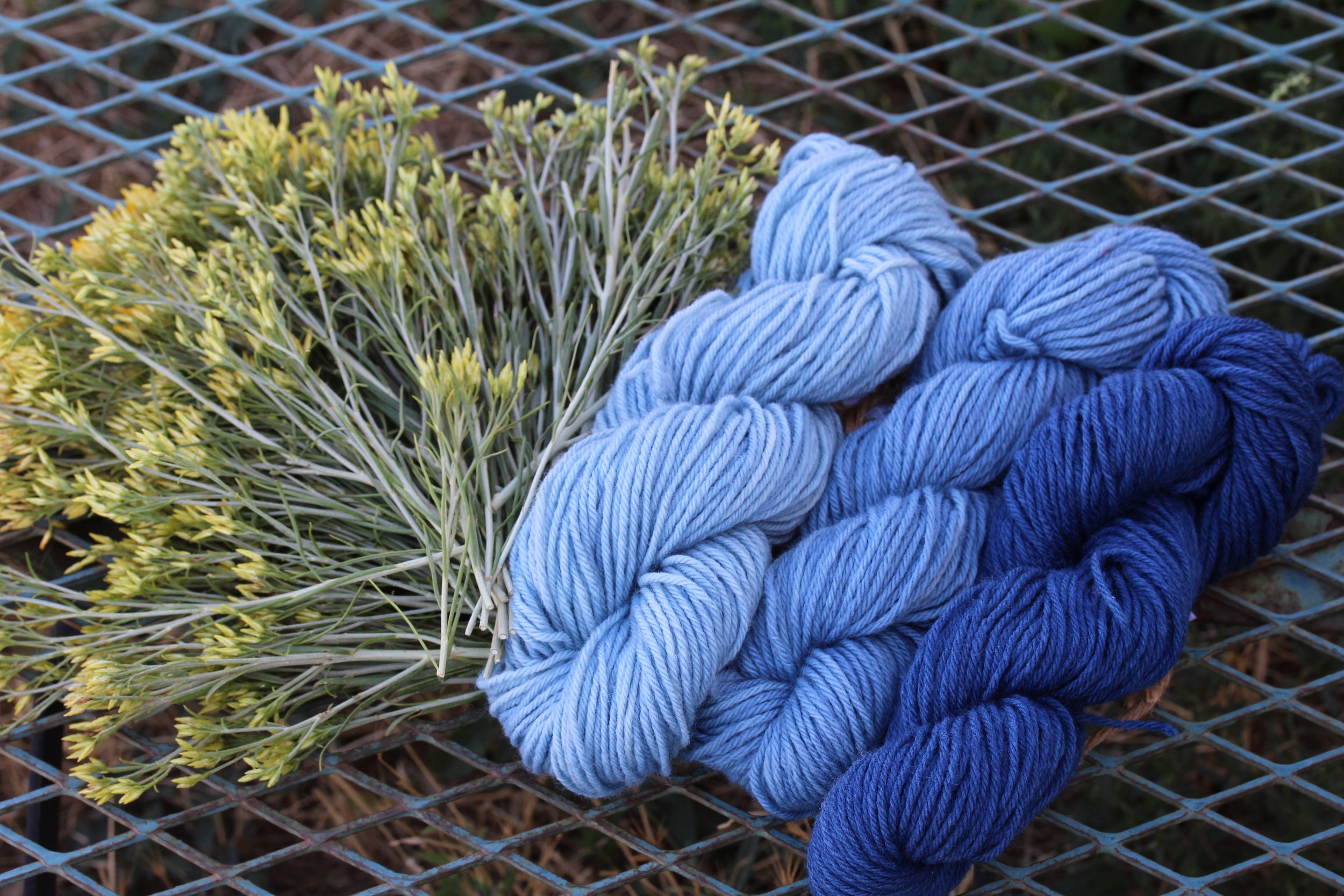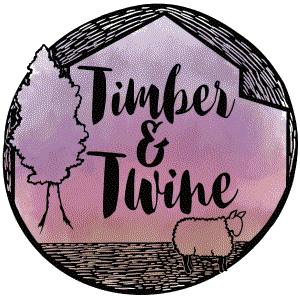
Frequently asked questions about botanical dyeing
What is “weight of fiber”?
Weight of fiber or WoF is the dry weight of the fiber, yarn or fabric you are going to dye. All mordant, tannin, and dyestuff calculations are based on this number.
How do you figure out the ratio of dye stuff to fiber?
Each dyestuff has a WoF (weight of fiber) percentage range. There are lots of dye recipes out there. I usually start by referencing Maiwa because that is where I get most of my dyestuffs. They list a range of WoF for every dyestuff they carry.
Do I have to mordant before dyeing?
With the exception of indigo, I mordant for all botanical dyeing, regardless of the dyestuff. For protein fibers, a mordant creates the bond between the fiber and the dye. For cellulose fibers, a tannin creates the bond between the fiber and the mordant and the mordant creates the bond between the mordant and the dye. I use alum (potassium aluminum sulfate) almost exclusively as my mordant but there are other mordants available.
What are the best mordants?
The most common mordant here in the US is probably alum (potassium aluminum sulfate or PAS). It can be used in small quantities and your mordant bath can be used a few times to make the most of both water and mordant. There are other mordants out there - aluminum acetate for cellulose fibers, the newer aluminum triformate, Symplocos a plant based aluminum bio-accumulator. I will admit that I don’t have much experience with other mordants. PAS has been a trusty, consistant mordant for me.
Tannin mordants for cellulose fiber dyeing on the other hand offer a variety of choices and many impart a color. I use gallnut as the closest to clear, sumac gives a pink/mauve undertone and pomegranate, myrobalen and fustic, a yellow undertone.
How does the pH of water affect the color outcome?
Many botanical dyes are pH sensitive. Acids can point reds toward orange and bases toward purples. Knowing your water will help explain why you get one color from cochineal and I get something a bit different. Treating fiber with Cream of Tarter for softness can also affect your outcome. It’s not a bad idea to test the pH of the water source you will be using. Another way to check is to use distilled water as a control.
How long do you expose the fiber to the dye? Does that affect color fastness?
Each dye stuff is different but in general I like to cook my dyes one day and leave them in the pot overnight. Yes, to a certain point time (and heat) can affect color fastness.
What are protein fibers vs cellulose fibers?
Protein fibers come from animals, the most common being wool, alpaca, mohair and angora and silk. Cellulose fibers come from including cotton, flax (linen), bamboo, hemp, rose…
What is the best way to store dye stuffs, both dry dyestuffs and unused dye baths?
I store my dry dyestuffs in glass or plastic (if this is what is came in) wide mouth jars. If the dyestuff arrives in a sealed pouch I leave it in the pouch until I open and then store in glass. When possible, I store them out of the light. Unused dyebaths can be stored (well marked!) in the fridge in big glass canning jars. I’m never that organized and usually plan out my dyeing to use a dye bath up. I have been known to leave pots on the floor in my dye room for weeks, strain and then use again. It’s pretty cool in that room. Logwood doesn’t keep very well and needs to be prepared and used in a couple of days.
What are the most lightfast botanical dyes?
Purples are probably the least lightfast. Maiwa is a good resource for individual dyestuff lightfastness. They generally list for each dye. That being said, I wouldn’t miss dyeing with logwood and enjoying it’s brilliant royal purpleness. Good care and storage of dyed items generally offers extended use. For many dyes, adding a touch of iron will increase lightfastness. You just need to be judicious with it’s use and use dedicated pots and utensils so you don’t contaminate other dye projects or fibers.
How do you process fresh leaf indigo as opposed to indigo reduced powder. Is there a difference in how color fast it is?
Fresh leaf indigo dyeing is such fun. There are a couple of methods I have used. One uses ice and the other salt. Because the indigo dye molecule is not water soluable, fresh leaf dyeing is more like a stain rather than the true dye you can get with a vat preparation.
What supplies and equipment does one need to get started?
Saftey first, so a good dust mask and supply of protective gloves. All dye pots and utensils should be dedicated and never used for food cooking.
A good stainless steel pot - I got most of mine at the thrift store. Although it is nice to have several you can dye with one good pot.
Stainless steel commercial cooking size spoons are great for stirring and clean up well
A big strainer that will fit in your pot and cheese cloth for those pesky fine dyestuffs like madder.
Gear ties - these aren’t critical but I love using them for keeping yarns separate in the dye pot. I also use them to hang dry yarns and fiber.
Heat source. I like to use a hot plate so I can dye outside when the weather is nice.
How can I acquire natural dyestuff without gardening?
Great question! I will list a few resources I use here. As our dye garden grows, we hope to have dyestuffs to share as well. Keep in mind that extracts are different than original dyestuffs, more concentrated and sometimes a combination of plants or seasons.
My favorite resource for dyestuffs is Maiwa. They are a wonderful resource for dyes as well as Information. Most of the dyestuffs we sell are from Maiwa but we sell smaller quantities for folks just starting out. They also have an excellent dyeing resource that you can access through their website or download.
I also source dyestuffs from Botanical Colors. Sometimes their instructions are incomplete and I go back to Maiwa for recipes and WoF percentages.
Is the temperature you dye at dependent on the dye stuff, the mordants or the fiber or a combination?
It is! Some dyes are heat sensitive. Certain madders need to be cooked at lower temp to keep from bringing out the browns (unless that is the color you are looking for). I am more concerned about not heating fiber to a temp that will degrade it. I cook my dyestuff first, especially if the recipe calls for a higher temp, cool and then introduce the fiber, slowly bringing the temp up to 150° F depending on the fiber or fiber blend.
How do I prepare my fibers to use botanical dyes? Wash/mordant/fixatives etc.
Preparing your fibers well is the foundation for successful botanical dyeing. I soak all my fibers first for 30 min. Next I scour. For protein fibers I use orvis paste soap and for cellulose fibers I use Synthrapol.. Rinse again until the water runs clear. Finally I mordant or tannin/mordant. Fibers can be dried and stored indefinitely after scouring or mordanting.
